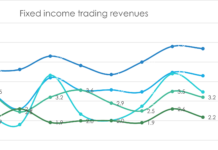Bloomberg’s recent agreement to acquire execution management system (EMS) provider Broadway Technology, raised some eyebrows within the front office universe.
Broadway had previously been the fixed-income-focused business of Broadway Technology Holdings, and it had been split from the rest of the company after front office technology provider, ION, acquired the larger part in 2020.
ION was not allowed to acquire the fixed income trading business because the UK’s Competition and Markets Authority (CMA) said it had concerns relating to the supply of fixed income electronic trading systems.
The CMA wrote, “Based on evidence from the companies’ own documents and feedback received from their customers, the CMA considers that ION is by far the largest supplier of these systems and Broadway is one of only two significant competitors.”
However, Bloomberg has now agreed to acquire that part, despite being one of the two ‘significant competitors’.
A source close to the deal says, “When they were looking at the ION deal with Broadway, they were looking at a fundamentally different question. They were looking at two products, went out to market, and heard from the market that these products look the same. In this merger, they need to answer the question of the extent to which there is competition between the ETOMS product and the Broadway EMS. The reality is, it’s not what the CMA described before at all.”
Bloomberg has said since that the fixed income market has nuances that demand the competition is delineated by instruments within the fixed income asset class, as this reflects very different technologies and trading styles.
“We view the world quite differently; there’s a lot of nuance to the fixed income EMS market,” says Ben Macdonald, global head of enterprise product at Bloomberg. “We split fixed income between credit-driven markets and rates-driven markets and by dealer demand. When we look at our business versus Broadway, Bloomberg’s EMS is very much credit-centric with ETOMs. That market usually operates in minimum time increments of one second at most. On the other side of that, you’ve got the rates market which is operating in increments of milliseconds. That is a more sophisticated, complex market structure that spans exchanges in the futures market and central limit order books (CLOBs) in the MTF market. Our clients are primarily regional and super regional clients on the sell side, really want a EMS that spans both credit and rates.”
When the CMA made its judgement regarding ION in 2020, it found that, “Based on the Parties’ internal documents and evidence from third parties, there are only a small number of competitors that could constrain the merged entity in the supply of sell-side front-office systems for FI electronic trading. Bloomberg is the only competitor to impose a significant constraint on the parties while AxeTrading, smartTrade and TransFICC provide a more limited constraint.”
Since the deal was announced, AxeTrading has been acquired by Trading Technologies – and refocused to provide a multi-asset EMS rather than a purely fixed income system – which further changes the competitive profile of the market. Macdonald argues that this demand for multi-asset systems validates the need for convergence in this space.
“There are synergies between the markets themselves, but also dealers’ clients are trading with them across both of those asset classes,” he says. “That’s the case for us, and by bringing these two businesses together, we bring competition to that market via a credit and rates EMS in fixed income, more choice, and we fill a gap in our range, which is why we’re doing it.”
For buy-side firms, Macdonald asserts that this allows a better delivery of efficient trading and risk support.
“If you’re a macro asset manager, and you’re trading with a midsize to larger sell side or market maker, it’s actually inefficient to have two copies in the system when they’re trading on one platform or another. Managing settlement risk and operational risk is a lot harder. Bringing these together helps us solve that problem. For our clients, having their risk capabilities, with liquidity, in a much closer proximity has got to be beneficial. People are trying to manage risk and the availability of liquidity in the context of their risk book.”
The CMA declined to comment on the deal, with a source close to the organisation noting that it “can’t speculate on new acquisitions outside of a formal investigation / announcement,” and none has been made.
©Markets Media Europe 2023
©Markets Media Europe 2025














